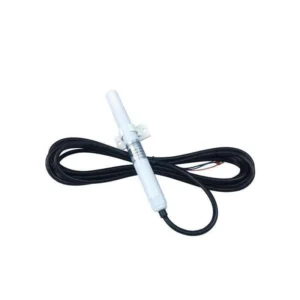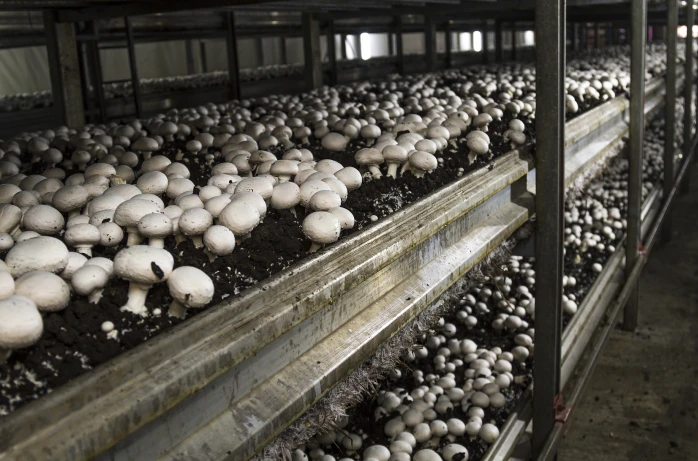Coda Sensor For mushroom cultivation
In the pursuit of prosperous mushroom cultivation, an exquisitely controlled environment is non-negotiable for reaping the fullest growth potential and maximizing yields.Temperature Control, humidity, the quality of air – chiefly the levels of carbon dioxide sensors, light exposure, and soil moisture sensors.are all elemental pillars that must be fine-tuned with pinpoint accuracy.
First, to meticulously dissect the quintessential environmental prerequisites for mushroom growth.
Second, to unearth precisely how Coda Sensor’s avant-garde sensor technologies equip farmers .
The means to perpetuate these optimal conditions, thereby catalyzing an upswing in mushroom production.
Temperature Control for Mushroom Cultivation
Let’s consider white button mushrooms (Agaricus bisporus) as a notable illustration. These mushrooms display their peak vitality and the most robust growth when the ambient temperature control is carefully held within the specific range of 18 to 20°C. However, shiitake mushrooms (Lentinula edodes) present a contrasting thermal preference. They flourish optimally in cooler environments, with the ideal temperature zone stretching from 10 to 15°C.
The meticulous upkeep of the correct temperature control is far more than just a necessary step. it is the very foundation upon which the healthy expansion and multiplication of mycelium rely. By ensuring the temperature remains steady and appropriate, cultivators set the stage for a highly productive and triumphant fruiting period.
Temperature Sensors are a game-changer in mushroom cultivation. Coda Sensor has developed high-precision temperature sensors that are specifically designed to vigilantly monitor and precisely regulate the temperatures within mushroom growing settings. These advanced sensors act as reliable guardians, ensuring that the temperature remains firmly within the optimal range.
Managing Humidity Levels for Mushroom Development
The humidity level that customarily ranges from 65% to 75% is of considerable importance. The mycelium, which bears a resemblance to the root system of a plant, functions as the vital groundwork for the growth of mushrooms.It can more proficiently draw and incorporate nutrients from the culture substrate when in such a humidity setting. This specific humidity interval offers an ideal milieu that facilitates the mycelium’s nutrient-acquisition activities.

Humidity sensors offer real-time surveillance, guaranteeing the presence of ideal moisture conditions. They possess the ability to automatically regulate misting systems, thereby sustaining the most favorable humidity levels. This not only diminishes the likelihood of contamination but also enhances the overall mushroom production yields.
carbon dioxide sensors and Air Quality
Proper airflow and CO₂ regulation are essential in mushroom cultivation. High CO₂ levels can inhibit mushroom cap and stem development.Especially during the fruiting phase when CO₂ concentrations should stay below 1,000 ppm. Efficient air circulation is needed to remove excess CO₂ and introduce fresh air.
Coda CO₂ and Air Quality Sensors:
carbon dioxide sensors monitor air quality and CO₂ levels continuously. Integrated with ventilation systems, these sensors automatically adjust airflow to maintain the ideal conditions for mushroom growth.It can preventing poor fruiting caused by high CO₂ concentrations.
Optimizing Light Conditions for Fruiting Mushrooms
Although mushrooms do not rely on light for photosynthesis, particular species have specific lighting requirements during the fruiting stage. For instance, shiitake and oyster mushrooms thrive with indirect light, whereas white button mushrooms develop optimally in the absence of light. Appropriate control of light conditions promotes healthy fruiting and avoids stress resulting from overexposure.
Coda supplies sophisticated Illuminance sensors for regulating the intensity and duration of illumination within mushroom cultivation settings. These sensors are capable of automating the lighting systems, thereby guaranteeing that mushrooms are provided with the precise quantity of light essential.
Monitoring Substrate Moisture for Healthy Mycelium
In the process of mushroom cultivation, soil moisture holds a significant position in relation to the formation of fruiting body primordia. As the mycelium advances to a particular stage, the right level of soil water content serves as a catalyst for the initiation. Typically, at this specific juncture, it is necessary to raise the soil moisture content suitably, attaining around 70 – 80%.
Coda Sensor’s soil moisture sensors continuously keep a watch on water content in real-time. This empowers growers to uphold the precise moisture balance. By averting the perils of over-watering and under-watering alike, these sensors actively contribute to the enhancement of the overall well-being and productivity of mushrooms.
Mushroom Cultivation Conclusion
In the pursuit of successful mushroom cultivation, the precise control of environmental elements. Including temperature, humidity, CO₂ concentrations, light exposure, and substrate moisture is of utmost importance. Coda Sensor presents a diverse array of cutting-edge sensor solutions that empower mushroom cultivators to vigilantly monitor and optimize these essential conditions.
By incorporating CODA Sensor technologies into their cultivation processes. Mushroom farmers can elevate their operations to a more advanced tier, thereby ensuring enhanced efficiency and productivity within this highly delicate and demanding agricultural domain.

